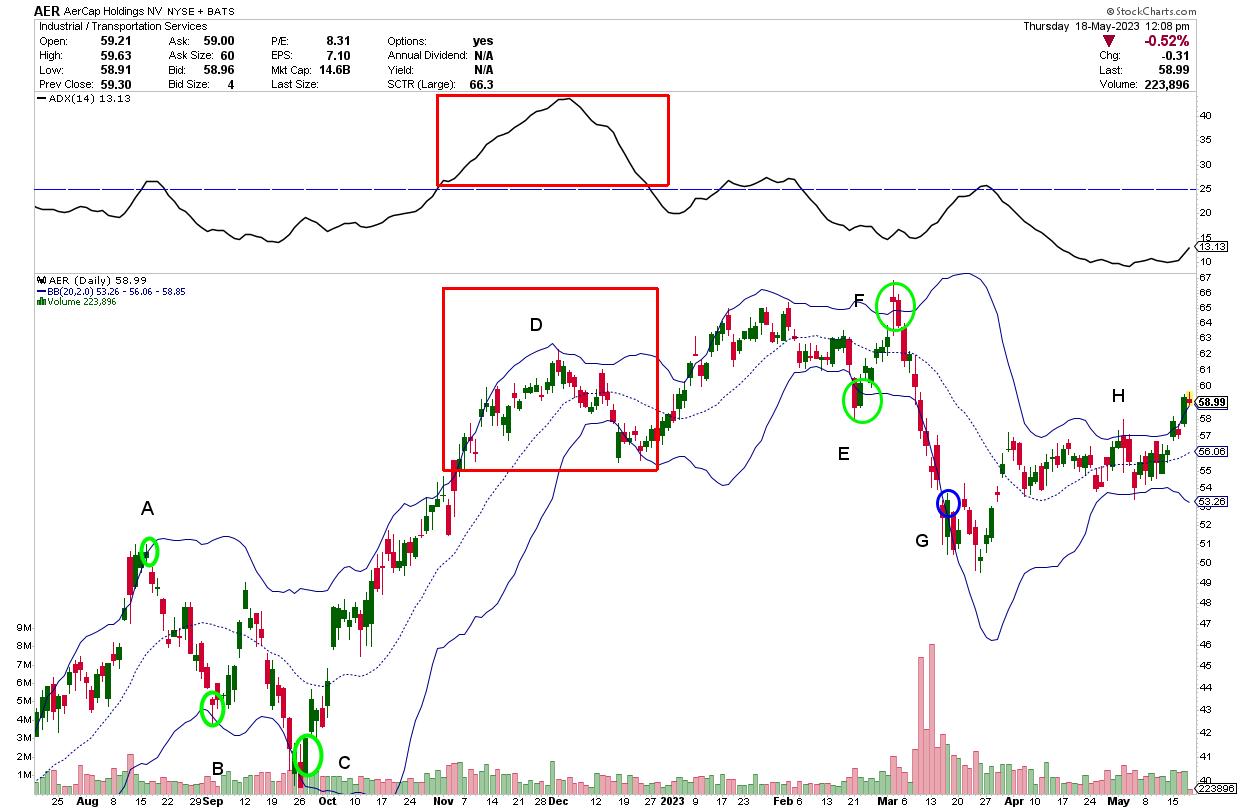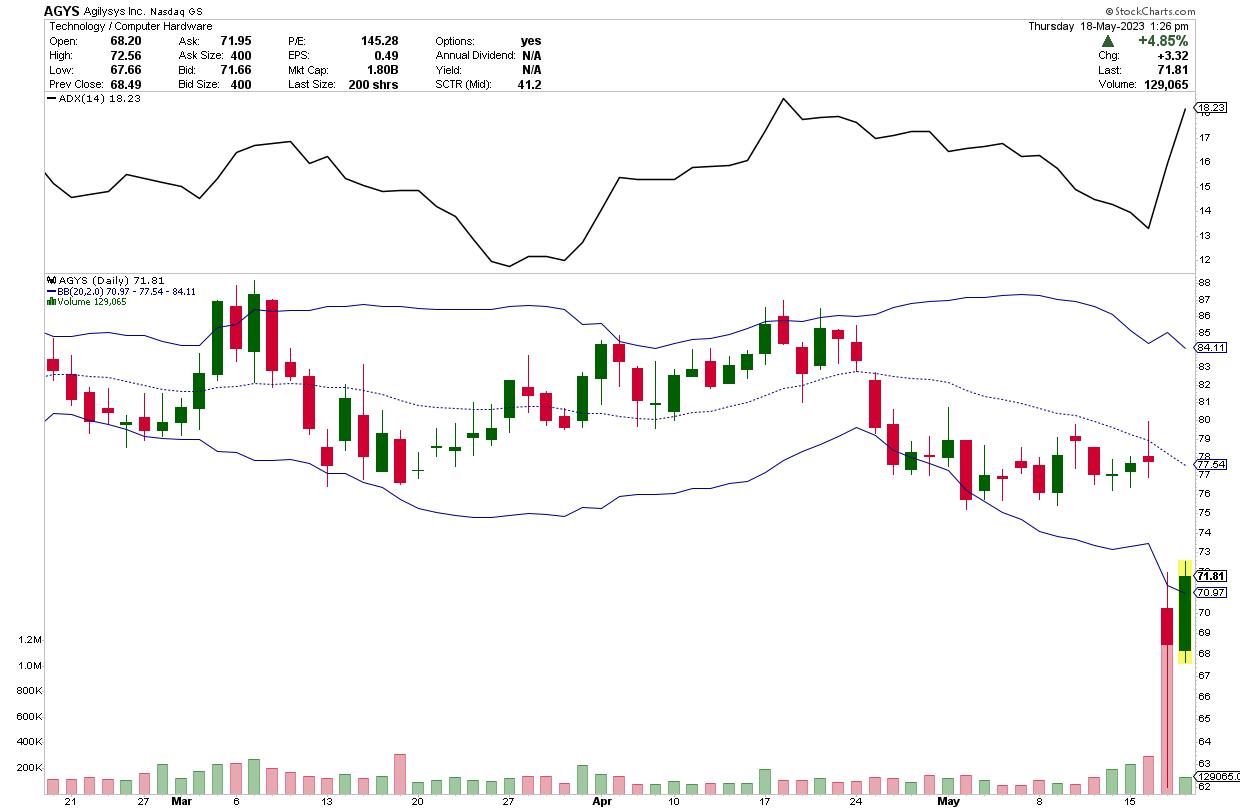
Fading an overextended market move is always tricky. Risky too. To go long on something you estimate is oversold, or to go short on an asset you think might be overbought, means capitalizing on a market sentiment misstep. And it takes guts to make a contrarian trade—you're trying to "correct" a momentary noise surge that's out of step with the realities of supply and demand.
You may not be able to validate your thesis even after the contrarian trade is done. But you can stack the odds in your favor. This is where Bollinger Bands® come in handy.
There are many ways to use Bollinger Bands. One is to use them to find potential fading opportunities. Because it's preferable to find these prospects in a non-trending environment, it's a good idea to add the Average Directional Index (ADX) to the mix.
The Method: Joe Ross' ‘Gimmee' Bar Trading Strategy
If you know anything about trader, educator, and author Joe Ross, then you're likely familiar with his concept of the "Gimmee Bar" which he introduced in his book Electronic Trading ‘TNT' IV (1998).
In a nutshell, here's what it's about. When the market isn't trending, prices, according to Ross, tend to close within the upper and lower Bollinger Bands (representing two standard deviations of a 20-day moving average) around 95% to 96.5% of the time.
This stat alone outlines the trade. Here are Ross's rules:
- Wait for price to exceed a given band (lower or higher).
- Wait for price to close back within the band—this is the ‘Gimme Bar.'
- Place a long (or short) entry order a tick or point from the entry bar.
If the entry bar is too long, or too close to the median band, you might want to use your own discretion, and perhaps avoid the trade.
As far as how long to ride the trade—whether you're going to hold it until it crosses the middle band or opposite band, or whether you're going to take profits based on a predetermined risk%—is up to you and depends on the situation (each trade will present a different dynamic).
The chart below of Aer Cap Holdings (AER) shows a series of "Gimmee Bar" trades.

CHART 1: MULTIPLE TRADING OPPORTUNITIES. The daily chart of AerCap Holdings (AER) shows several trading signals that may have been taken based on the 'Gimmee' bar trading strategy and ADX readings.Chart source: StockCharts.com. For illustrative purposes only.
Here's what a series of trades might look like:
A: Short trade that presented a sizable return.
B: Long trade that might have been profitable if you closed the trade when it crossed the middle band.
C: Long trade with a sizable return.
D: NO trade as the ADX line exceeded 25 (see red boxes in both areas of the chart).
E: Long trade that would have worked.
F: Short trade that presented a sizable return opportunity.
G: A failed trade (you would have been stopped out).
H: A risky trade that might have worked; volatility contracted, the bands have narrowed, and a price explosion is likely to occur.
Now that you understand the basic concept behind this fade trade, how might you scan for these quick countertrend opportunities?
Scanning for a Fade Trade
In the StockCharts platform, from Your Dashboard,
- Click Charts & Tools
- Scroll down to Sample Scan Library > Browse Scan Library
- Find and run the following scans: Moved Above Upper Bollinger Band and Moved Below Lower Bollinger Band
Remember that, while the first scan is under the "bullish" category, you're looking to take a contrarian position on this stock, so your bias is bearish (the reverse applies to the second scan).
Say you run the "Moved Below Lower Bollinger Band" scan. After running the scan, there were hundreds of stocks to look at. Quite a few of them also had an ADX reading under 25, and many of the stocks were not popular names. It helps to sort the column based on the universe (U column).
One of the stocks in the scan is mid-cap Technology company Agilysys Inc. (AGYS).
Would you fade this drop (see chart below)?

CHART 2: A FADING TRADING STRATEGY. Agilysys Inc. (AGYS) offers a fading opportunity toward the upside as per Joe Ross' "Gimmee Bar" rules. Do you have the gumption to take it? Note the high selling volume underpinning the second-to-last price bar.Chart source: StockCharts.com. For illustrative purposes only.
As mentioned earlier, making a contrarian trade, especially when it concerns a slight market misstep, is tricky. There are ways to increase your odds and reduce your risk, such as using the ADX to identify non-trending stocks. But ultimately, there's no guarantee that the stock you fade won't skyrocket or plunge against your position.
But the opportunities to identify and trade these "Gimmee Bars" are plenty. And the StockCharts Bollinger Band scans can help you find them, whenever you're itching to go against the grain and "correct" a few perceived market imbalances.
Is Contrarian Trading Your Thing?
The idea of going against the crowd in trading—spotting stocks to fade using Bollinger Bands—has its own rewards and risks. Sure, tools like Bollinger Bands and the ADX can help you spot these opportunities. But remember, every trade has its unique twists and turns. And let's not forget, the market can be pretty stubborn sometimes, staying irrational longer than our wallets might like, so keeping an eye on those risks is critical.
So, here's the deal. This strategy can be pretty cool if you have enough gumption to trade the noise and fade the erroneous. But it needs careful analysis and comfort with contrarian trading strategies. And as with everything in trading, it should just be one tool in your kit. After all, it's all about managing risk and finding what works for you.

Disclaimer: This blog is for educational purposes only and should not be construed as financial advice. The ideas and strategies should never be used without first assessing your own personal and financial situation, or without consulting a financial professional.
Happy charting!
